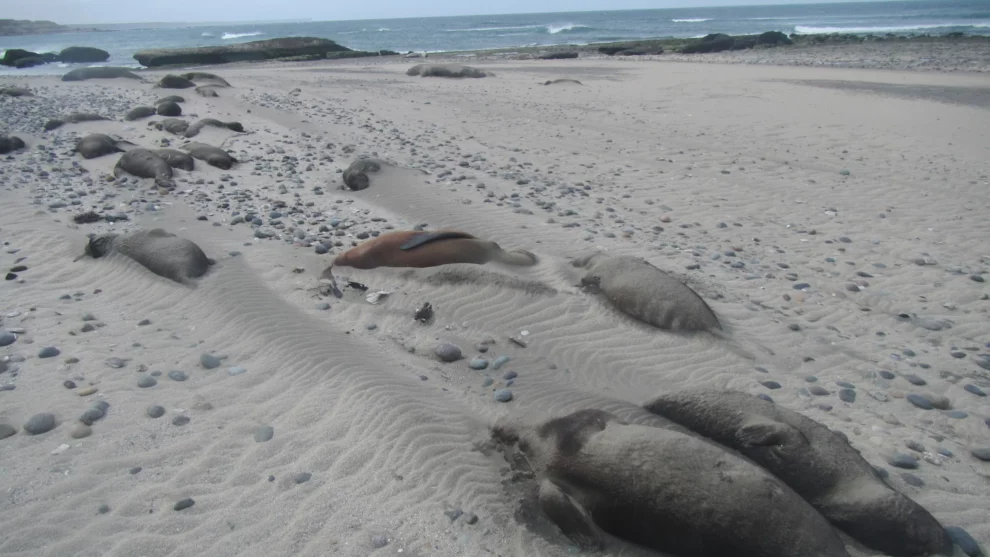Avian influenza is killing tens of thousands of seals and sea lions in different corners of the world, disrupting ecosystems and confounding scientists who don’t see a clear way to slow the devastating virus.
The worldwide bird flu outbreak that began in 2020 has led to the deaths of millions of domesticated birds and spread to wildlife all over the globe. This virus isn’t thought to be a major threat to humans, but its spread in farming operations and wild ecosystems has caused widespread economic turmoil and environmental disruption.
Seals death
Seals and sea lions, in places as far apart as the U.S. state of Maine and Chile, appear to be especially vulnerable to the disease, scientists said. The virus has been detected in seals on the east and west coasts of the U.S., leading to deaths of more than 300 seals in New England and a handful more in Washington. The situation is even more dire in South America, where more than 20,000 sea lions have died in Chile and Peru and thousands of elephant seals have died in Argentina.
The virus can be controlled in domesticated animals, but it can spread unchecked in wildlife and marine mammals, such as South America’s seals, which lacked prior exposure, said Marcela Uhart, director of the Latin America program at the Karen C. Drayer Wildlife Health Center at the University of California, Davis.
“Once the virus is in wildlife, it spreads like wildfire, as long as there are susceptible animals and species,” Uhart said. “Movement of animals spreads the virus to new areas.”
Scientists are still researching how the seals contracted bird flu, but it is most likely from contact with infected seabirds, Uhart said. High mortality has affected South American marine mammals consistently since the virus arrived late in 2022, and birds in Peru and Chile have died by the hundreds of thousands from the virus since then, she noted.
The virus is still spreading and was detected in mainland Antarctica for the first time in February.
The deaths of seals and sea lions disrupts ecosystems where the marine mammals serve as key predators near the top of the food chain. Seals help keep the ocean in balance by preventing overpopulation of the fish species they feed on.

Dead sea lions are seen on an Atlantic Patagonian beach near Viedma, Río Negro province, Argentina, August 28, 2023. /CFP
Many species affected, such as South American sea lions and Southern elephant seals, have relatively stable populations, but scientists worry about the possibility of the virus jumping to more jeopardized animals. Scientists have said bird flu might have played a role in the deaths of hundreds of endangered Caspian seals in Russia last year.
“The loss of wildlife at the current scale presents an unprecedented risk of wildlife population collapse, creating an ecological crisis,” the World Organization for Animal Health, an intergovernmental organization, said in a statement.
Possible solutions
Scientists and environmentalists are hopeful vaccinating poultry will help lessen the spread of the disease, said Liesbeth van der Meer, director of the environmental group Oceana in Chile, adding that it’s also important for people to avoid potentially infected animals in the wild.
“Authorities have carried out campaigns about the disease, strongly recommending to stay away from seabirds or marine mammals with symptoms or found dead in the coastal areas,” van der Meer said.
More seal deaths could disrupt critical ecosystems around the world, said Lynda Doughty, executive director of Marine Mammals of Maine, a rescue organization that responded to seals with bird flu during the New England outbreak.
“You need this happy ecosystem. If we’re taking out some important species, what is the trickle down effect of that? That’s the million dollar question,” Doughty said.
Source: CGTN











Add Comment